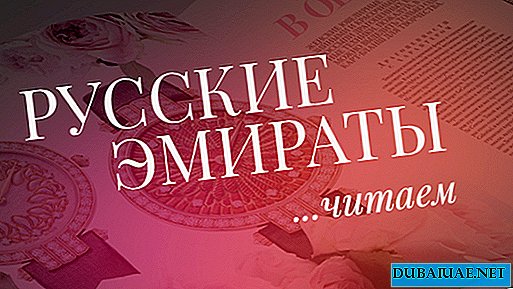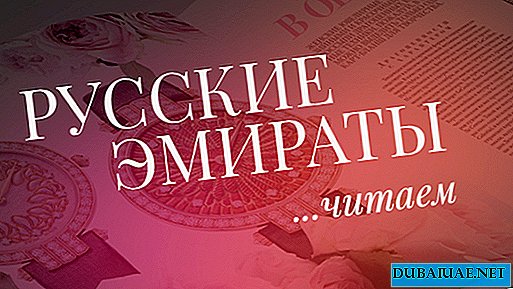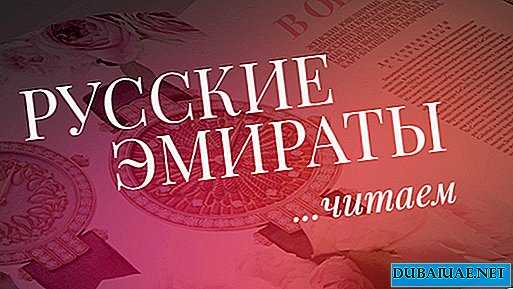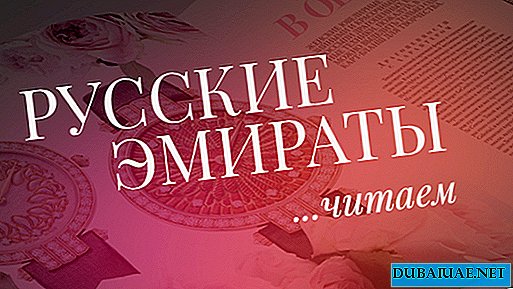In Dubai you will not meet them. But in the vicinity of Al Ain, Dibba, Fujairah, Ras Al Khaimah and Umm Al Quwain you can see donkeys. They graze peacefully in small groups, gracefully and generously cross the road, sometimes wallow in the sand or run after each other, funnyly shaking their hind legs. Only once did I see on horseback a very middle-aged rider in shoes with curled toes - a lively fairy tale about the old man Hottabych.
On the shelf, among my favorite toys, there are two donkeys - the sad, melancholy Eeyore and the provocative bully in a fashionable T-shirt with the inscription “Don’t worry! Be Happy! ”
And what really makes the donkeys happy and sad? What did we people have a hand in? What has given us communication with these amazing animals for millennia? A survey of relatives, friends, acquaintances showed that the appearance of donkeys on the pages of books, in films, in political advertising or cartoons does not go unnoticed. And how many proverbs and sayings, legends, tales, jokes and fables are devoted to them! What epithets! Let’s see where myths are, and where is reality, where is truth, and where is fiction, and where is it in vain ...
 The attitude towards donkeys is ambiguous. On the one hand, a donkey is a symbol of stupidity and stubbornness. On the other, it is a sacred animal mentioned in the Bible and other religious subjects of the most ancient civilizations of the world. At the same time wise and stupid, complaisant and stubborn, hardworking and lazy ... Let's take a closer look at him.
The attitude towards donkeys is ambiguous. On the one hand, a donkey is a symbol of stupidity and stubbornness. On the other, it is a sacred animal mentioned in the Bible and other religious subjects of the most ancient civilizations of the world. At the same time wise and stupid, complaisant and stubborn, hardworking and lazy ... Let's take a closer look at him.
A donkey is an equine animal, a kind of horse. His closest relatives in the wild are zebras, kulans, kiangs and horses. Donkeys were first domesticated in Upper Egypt and Ethiopia in the Neolithic 5-6 thousand years ago. Depending on the breed, donkeys can have a height at the withers from 90 to 163 cm. Their color varies from black, dark brown, chestnut and sand to silver gray, almost white.
The front of the muzzle is usually lighter than the rest of the body. A strip of darker wool (belt) runs along the back, sometimes crossed by another strip on the shoulders (cross).
The name of the breeds sounds like a traveler’s card - Nubian, Somali (this is when black bars are on the donkey’s feet; there are only 150 of them left in the world), Poitus, Catalan, Bukhara, Kashir and Khomad. Ideally white donkeys live on the island of Asinara, near the island of Sardinia and on the territory of the Porte Conte nature reserve in Algeria - only 90 individuals. Donkeys can be smooth-haired, long-haired, curly. Moreover, these are very unpretentious animals, and easily tolerate the absence of feed and water. Narrow strong donkey hooves are adapted for movement on stony soil, but are very afraid of moisture. And most importantly - a donkey is able to carry large loads, up to 2/3 of its own weight, and sometimes even exceeding it.
Donkeys weigh an average of 70-80 kg, while the strongest and largest individuals are able to carry a load of up to 130 kg, and in a harness - up to 2.5 tons!
The donkey is simply indispensable for traveling over rough terrain, and it does not need horseshoes. He has a large head, mane is stiff and sticking out, no bangs; tail, like a cow, and ends with a brush.
In case of danger, the donkey is able to reach speeds of up to 70 km / h. Well, the famous donkey roar is just his calling card!
 Long ears are also not a whim of nature, they allow you to remove excess heat from the body of the animal. Donkeys can not snort and laugh like horses, but they are happy to make piercing screams.
Long ears are also not a whim of nature, they allow you to remove excess heat from the body of the animal. Donkeys can not snort and laugh like horses, but they are happy to make piercing screams.
Another feature - these animals do not know how to swim. Life expectancy, on average, is 25-35 years, among centenarians 45-47 years. Teeth grow constantly. Donkeys are usually held in small groups led by a dominant male. Actually, wild donkeys today can be seen infrequently. But feral donkeys are found not only in Asia and Africa, but also in Australia (1.5 million animals), in the USA (6 thousand), in Europe. The total number of donkeys in the world is 45 million individuals, and all of them can work without expensive fuel for 8-10 hours a day.
However, only after loving the owner, the donkey serves him faithfully and faithfully, although he does not show violent feelings. A donkey is a friend and helper, but never a slave and servant. In order to make a donkey walk in a circle and twist millstones, in ancient times they blindfolded him and hung a carrot in front of his nose. Guess what happened next? And, nevertheless, donkeys always did the job a person needed ...
And the world is talking. Speaks for millennia. Ignorance, lack of dignity, meanness, danger, betrayal, arrogance, inconstancy, thick-skinned, arrogance, stupidity, naivety, savagery, submission, oppression, violence - it's all about a donkey.

Patience, humility, firmness, poverty, tranquility, modesty, common sense, humility, moderation, sensitivity, industriousness, peacefulness, silence, courtesy, insight into secrets, desire for freedom, quick-wittedness, reliability, sacrifice, kindness, thoroughness - and this is also about him! The image of a donkey was used in allegories, heraldry, emblem and sculpture.
Donkeys are extremely cautious, they have a very developed instinct for self-preservation. And if the donkey is afraid of something, then neither persuasion nor threat will force it to budge. Donkeys are affectionate and long without a master. And even at night donkeys don’t leave us with their worries - to see a laden donkey in a dream for good luck, children riding a donkey - will be healthy and happy, and a white donkey promises long-term success.
DONKEY
Different nations and different religions:
- In Buddhism, the donkey is a symbol of asceticism
- In ancient Jews, a donkey-leather belt was used to punish the perpetrators by court order
- "Valaam’s donkey" - a symbol of the fulfillment of God's will, humility
- Phrygian Cap - King Midas was awarded donkey ears as a symbol of stupidity and ignorance
- The ancient Armenians have the custom of sacrificial slaughter of a donkey on the grave of the ancestor of the debtor; the debt was paid, otherwise the soul of the ancestor turned into a donkey
- The "Metamorphoses", or "Golden Donkey" of the ancient Roman writer Apuleius - an example of wisdom and prudence, cunning and enterprise
- Donkey - the main character of the fables of Aesop, Fedra, Krylov
- Scene of the birth of Christ - a donkey symbolizes calm and modesty
- Nietzsche’s donkey is a symbol of wisdom, a rejection of the values of the outside world
- In the Middle Ages - a symbol of infidelity; on a donkey drove women convicted of adultery
- In bestias - a red donkey - a symbol of the devil, evil, devilish fire; red donkey - big danger
- Kings and judges rode donkeys in Palestine
- Donkey - a symbol of the city of Bourget (France) - is depicted sitting on a throne
- "Donkey Bridge" (Pons Asinorum) - the key to solving mathematical problems from the book "Elements of Euclid"
- Donkey forehead - a symbol of patience and humility
- In heraldry - a symbol of patience and endurance
- In astrology - the symbol of Saturn, the second Sun
- In alchemy, the donkey is the 3-main demon: mercury, salt, sulfur
- The ancient Jews donkey - the sacred animal of kings and prophets (the entry of Jesus Christ into Jerusalem)
- Roman empresses and matrons bathed in donkey milk to maintain skin whiteness
- The number of donkeys measured human wealth
- In the ancient world donkeys carried conscription, were used by Sumerians in war chariots.
- Unofficial symbol of Catalonia, Croatia and Naples - for hard work, perseverance, zeal
- In ancient Egypt, only pharaohs and noble nobles had the right to ride donkeys
- In Babylon, the god Ninib represented the donkey
- In Chinese mythology, a donkey is a divine steed.
- In ancient Greece - the sacred animal of the god of fertility Priapus and Dionysus; satyrs were depicted riding a donkey
- During the ancient festival of fools, the "donkey god" was sacrificed
- "Buridanov donkey" - a philosophical paradox: a donkey between 2 haystacks - the problem of choice
- There are also monuments to donkeys - in Bukhara, the donkey carries Khoja Nasreddin, in Gabrov - Tricky Peter, there is also a donkey museum. On display are photographs of these outstanding animals and various accessories for them.









